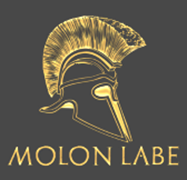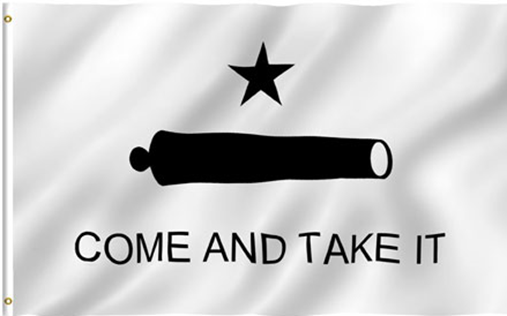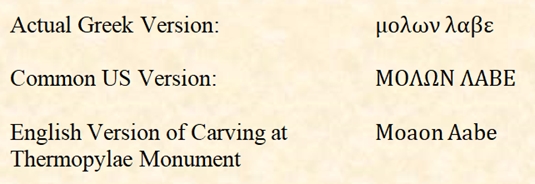Molon Labe
 You
may have seen the
phrase
used, especially by those advocating 2nd Amendment rights but what does
it mean, what is the historical context and for that matter, what is the
proper pronunciation? The phrase is Greek and means: "Come
and take them." It also is commonly translated as "Come and take it",
because of some American historical influences discussed below.
You
may have seen the
phrase
used, especially by those advocating 2nd Amendment rights but what does
it mean, what is the historical context and for that matter, what is the
proper pronunciation? The phrase is Greek and means: "Come
and take them." It also is commonly translated as "Come and take it",
because of some American historical influences discussed below.
The phrase is often used in reference to the 2nd Amendment and the right to
bear arms. It resonates in that context because the phrase originally was
proclaimed in defiance of tyranny, and speaks to an inalienable right of
humans to protect their life and liberty.
The correct pronunciation is "Mow Loan Lah Vay", but in America the
phrase is usually pronounced "Mow Loan Lah Bay" and that is
the pronunciation most recognizable to the firearms and 2nd Amendment
community.
The origin of the phrase dates back to the Greek city states in 480 BC.
Xerxes of Persia and his armies were invading Greece, and King Leonidas and
his small force of Spartans set out to confront them. Because the Persian
forces greatly outnumbered the Spartans, Leonidas chose a narrow coastal
pass at Thermopylae that would constrict the Persian force and that could be
defended by his smaller force.
The Spartans had no chance of prevailing, but still chose to fight and delay
the Persian advance. Knowing the Spartans were badly outnumbered, Xerxes
demanded that Leonidas and his men hand over their arms and surrender.
King Leonidas responded defiantly: Molon Labe ("Come and take them").
The Spartans held out for 3 days*, keeping the Persians at bay while the
rest of Greece was able to evacuate to strategic locations and plan counter
attacks for a later date. Those 3 days where the few stood against the many
ultimately led to defeat of the Persian invasion.
BATTLE OF GONZALES
In what would become the first battle of the Texas Revolution in 1835, the
phrase was again used by a group of Texas settlers in a skirmish against
Mexican soldiers. Mexico had loaned a single cannon to the settlers to help
them fight off Indian attackers. Later, the Mexican leadership had second
thoughts about providing the settlers with that type of weaponry and sent
soldiers to take the cannon from the settlers by force. The settlers fought
to keep it, and above their fortification they flew the now famous flag seen
below.

This is known as the Gonzales Flag, and it is frequently displayed in the
firearms and 2nd Amendment community. The flag is distinguished by the lone
star, the cannon, and the phrase "Come and take it".
Some variations on the spelling of Molon Labe are:

The phrase, its symbolism, and to some extent its history have been embraced
by advocates of a natural or constitutional right to bear arms that cannot
be infringed by any authority, and the right and duty to resist attempts to
limit that right.
_________
* The actual battle lasted for three days, but the entire engagement lasted a total of seven days in which the Spartans held off the Persian advance.
Primary Reference: Mark Wright, The Correct Molon Labe Pronunciation And Its Meaning
https://www.trekwarrior.com/molon-labe-pronunciation-meaning-gear/ (last accessed 10-25-2018).
This article can be accessed and saved in PDF format by clicking HERE.
If you have something to say about this or any of the other subjects we
discuss, please click below to…
BACK to Just the Facts.
Author
Note:
Like many young men growing up in the rural South, the author owned a .22
caliber rifle and a shotgun, both of which were used for hunting and sport
shooting. He no longer hunts and has passed the .22 rifle on to his son, but
he still owns firearms for recreation and personal defense. He is not a
member of the NRA and has no vested interest in the gun debate, but is tired
of hearing heated arguments presented on both sides of the issue without
bothering to learn the facts.